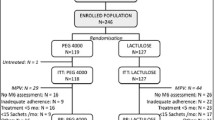Abstract
Objective: Hydroxyethyl starch (HES) is mainly eliminated via the kidneys. Any information about extrarenal elimination obtained so far has been either incomplete or contradictory. The objective of this study was to quantify the intestinal excretion of infused HES with a mean molecular weight of 200,000 and a molar substitution of 0.5 (HES 200/0.5) and to compare the reappearance/recovery rate in urine and plasma.¶Design: Prospective clinical study without control group.¶Setting: The study was conducted at the Institute of Hypertension of the Society of Clinical Pharmacology, Vienna, Austria, which is an establishment for research in volunteers.¶Participants: The results of six out of seven healthy male volunteers were appropriate for analysis. One trial subject had to be excluded from the study because of severe protocol violation (mixing of stool and urine samples).¶Interventions and methods: Each volunteer was administered 500 ml of 10 % HES 200/0.5 in a 0.9 % NaCl solution intravenously within 1 h. A gut lavage with 6 l of a polysaccharide free solution was continuously administered from 3 h prior to until 2 h after the HES infusion to facilitate the collection of the samples and to exclude any source of error at analysis. HES was quantified with the hexokinase method.¶Measurements and results: Right from the beginning of the infusion until 10 h after its completion, the cumulative HES excretion with feces (principle parameter) and urine as well as selective plasma volume and HES plasma level were measured. Six and 14 h after the infusion had been completed, the recovery rates of HES in urine were about 30 % and 40 %, respectively, and in plasma about 23 % and 8 %, respectively. By contrast, not more than a kind of “background noise amount” of HES (about 0.2 %) could be recovered in feces ( mean value in % of the infused amount of the substance). Six and 14 h after the infusion had been completed, the total recovery rates of HES were 53 % and 49 %, respectively.¶Conclusion: In a physiologically unimpaired gut HES 200/0.5 is not, or only to an infinitesimal extent, eliminated via the intestine. The question if there is any alternative path to renal excretion for HES still remains to be answered. As the calculated reappearance/recovery rate of HES is only about 50 % of the administered dose, further investigations as to the final fate of HES appear necessary.
Similar content being viewed by others
Author information
Authors and Affiliations
Additional information
Received: 17 November 1999/Final revision received: 2 March 2000/Accepted: 29 March 2000
Rights and permissions
About this article
Cite this article
Lenz, K., Schimetta, W., Pölz, W. et al. Intestinal elimination of hydroxyethyl starch?. Intensive Care Med 26, 733–739 (2000). https://doi.org/10.1007/s001340051240
Issue Date:
DOI: https://doi.org/10.1007/s001340051240




